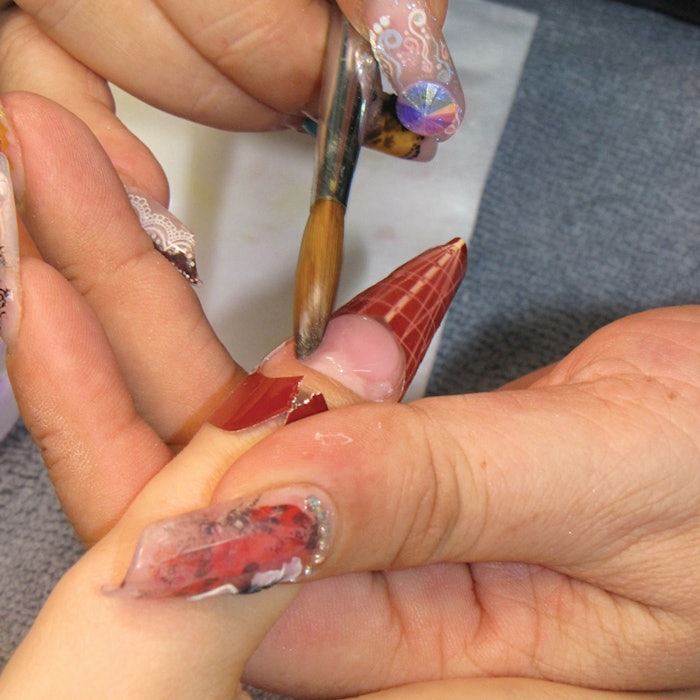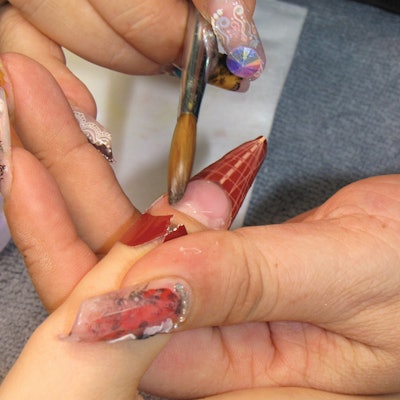

Chemistry is what makes acrylic work the way it does. When you mix your liquid and powder, a chemical reaction happens that causes the two separate ingredients to mesh together perfectly to create a strong, usable medium. The liquid contains monomers, stabilizers, cross-linkers, and catalysts, while the powder portion includes polymers, copolymers that contain the initiators, and colorants. A brand will create a liquid and powder that have the ideal balance of each chemical so that the two halves work together. When you pull in outside brands, you can’t assume that their recipe is the same, and you can end up with too much or too little of one chemical.
Shares professional brand NSI, “Each liquid is formulated with its own percentage of DMT (Accelerator / Promoter / Activator) to match the percentage of Catalyst (BPO / Benzoyl Peroxide) which is dispersed onto the polymers. If the ratios of DMT and BPO are not correct then slower or faster polymerization can occur. Product that sets too fast results in polymerization shrinkage, which causes lifting. On the other side, product that sets too slowly because of improper formulation does not completely polymerize before the tech starts to file. This can cause microscopic pulling of the unset product..”
Additionally, when you have too much initiator, your enhancements can become too brittle or can turn yellow. When you have too little initiator, your monomer may not react fully. If you apply it to nails, the unreacted monomer can soak through the nail bed and cause an allergic reaction and irritation.
On a practical level, if and when you have problems with your product (lifting, breakage, discoloration), you can’t troubleshoot with the manufacturer. The best way to go for both you and your clients is to simply stick with one system.











